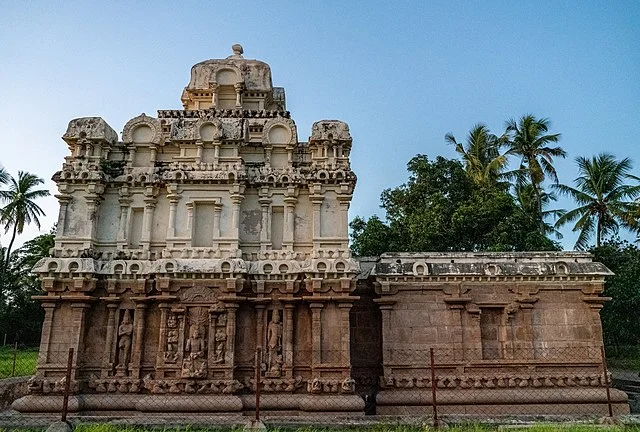Koranganatha Temple, located in Srinivasanallur in Tamil Nadu, India, is a notable example of early medieval Chola architecture. Dating back to the 10th century AD, the temple showcases the architectural innovations and sculptural artistry associated with the Chola dynasty. This post will delve into the historical background, architectural features, and cultural significance of Koranganatha Temple.
Get your dose of History via Email
Historical Background
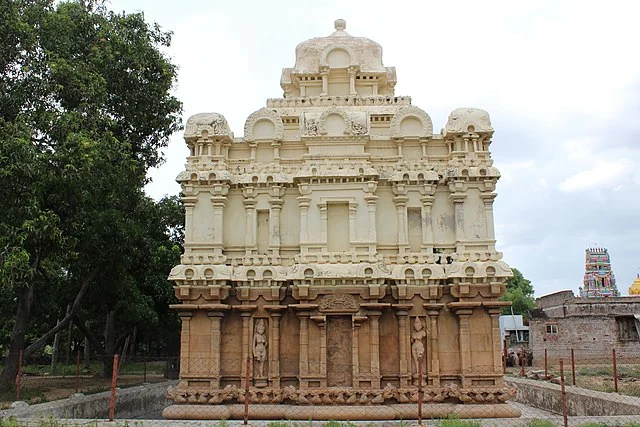
The Chola dynasty, one of the longest-ruling dynasties in South India, supported extensive temple building from the early centuries AD. Under the rule of kings like Parantaka I (c. 907–955 AD) and Raja Raja Chola I (985–1014 AD), the Cholas developed distinctive architectural styles and supported intricate temple construction. The Koranganatha Temple, likely built during Parantaka I’s reign, exemplifies early Chola religious and architectural values.
Architectural Features
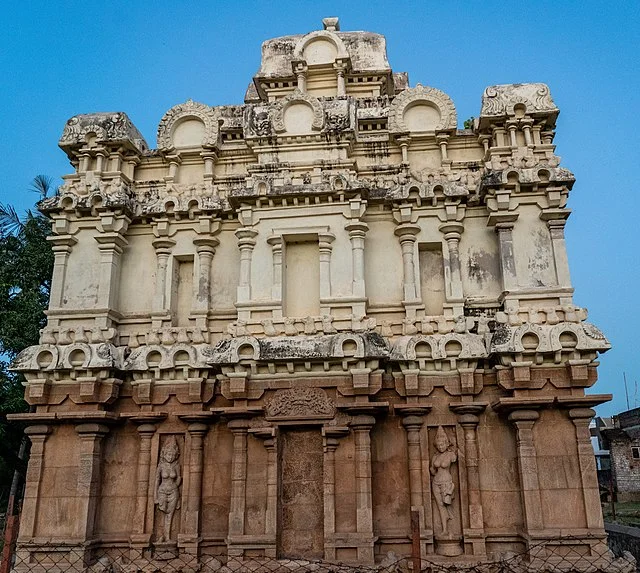
Koranganatha Temple is compact in structure, yet its design demonstrates high craftsmanship. The temple’s layout follows a typical Dravidian style, with a square sanctum, an enclosed pradakshina path (circumambulatory passage), and a vimana (tower) above the sanctum. Unlike later Chola temples that were grand in scale, Koranganatha Temple is smaller, which highlights early Chola temple proportions.
1. Vimana and Gopura
The vimana at Koranganatha Temple rises in a pyramidal form above the sanctum, divided into multiple levels or tiers. Each tier features miniature shrines, known as aedicula, which display intricate carvings and figures. The vimana culminates in a finial or stupika, a typical feature in Dravidian temple architecture. Koranganatha Temple does not have a large entrance gopura (gateway tower), a feature that became prominent in later Chola temples.
2. Sculptural Details
Koranganatha Temple contains exquisite sculptures, especially on its outer walls. These carvings illustrate scenes from Hindu mythology, primarily associated with Shiva, the temple’s presiding deity. The figures of deities, celestial beings, and mythical creatures are carved with attention to detail, showcasing early Chola iconography and stylistic choices. Notable sculptures include depictions of Shiva as Nataraja, performing the cosmic dance, and mythological guardians (dvarapalas) standing at the entrance.
Cultural and Religious Significance

Koranganatha Temple holds religious importance as a place dedicated to Shiva. The temple was built during a period when the Cholas emphasized Shaivism, dedicating numerous temples to Shiva throughout their empire. The temple reflects early Chola efforts to integrate art, devotion, and architecture in a harmonious manner. Furthermore, the temple’s smaller scale suggests it was built for a local community, underscoring the Cholas’ support for regional worship practices.
Inscriptions and Records
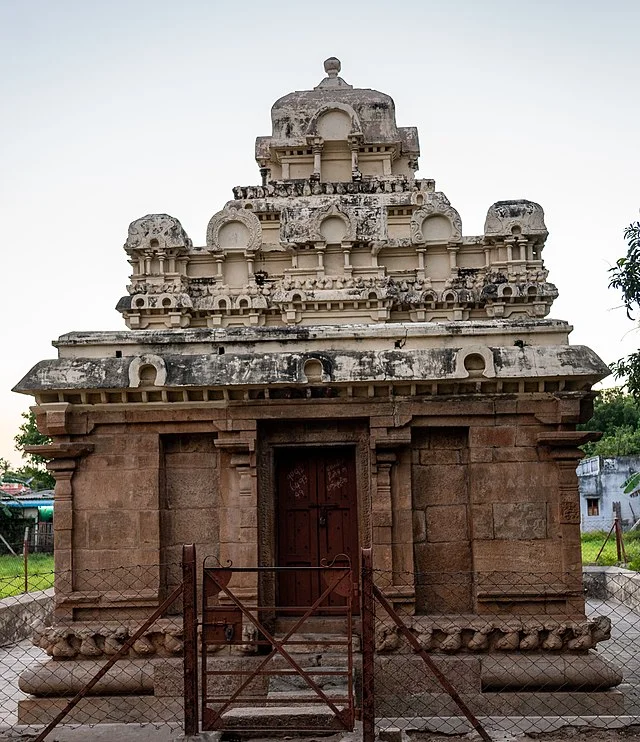
Inscriptions on the temple walls provide insights into its historical context and usage. These records, inscribed in ancient Tamil script, mention donations made to the temple for its maintenance and for supporting religious rituals. The inscriptions also record the names of donors, often local elites or members of the royal family, illustrating the Chola practice of temple patronage. The inscriptions serve as valuable resources for understanding the economic and social connections surrounding Koranganatha Temple.
Preservation and Legacy
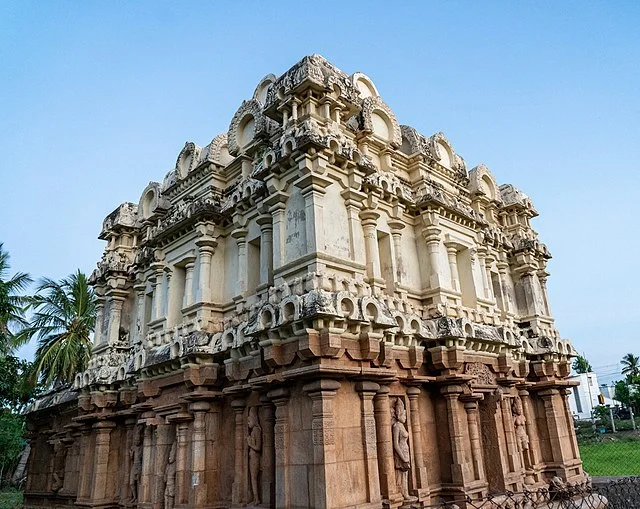
Koranganatha Temple remains an important site for studying early Chola temple architecture. Although time has eroded some of its features, conservation efforts have aimed to preserve its unique sculptures and structural layout. The temple’s design, particularly its vimana, influenced later Chola temples, which adopted and expanded upon its architectural innovations. The temple stands as a testament to the Chola dynasty’s early architectural legacy and religious devotion.
Conclusion
Koranganatha Temple at Srinivasanallur offers a glimpse into the architectural and religious ideals of the early Chola dynasty. With its intricate sculptures, compact structure, and historical inscriptions, the temple remains a significant example of 10th-century Chola craftsmanship and religious patronage. The temple’s preserved features provide scholars and visitors alike with a valuable opportunity to understand the cultural heritage of early medieval South India.
Source:

